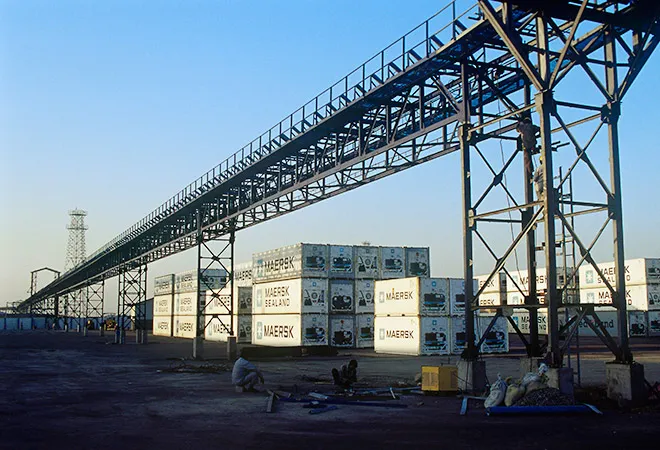
In the October 2019 report, the World Trade Organisation (WTO) ruled against India in a dispute filed by the USA regarding certain export subsidies that were being provided by India. The Special Economic Zone (SEZ) scheme was amongst the five Indian export promotion initiatives which the USA claimed were in violation of certain provisions of WTO’s Subsidies and Countervailing Measures (SCM) agreement. Under the existing system in India, units located within SEZs that are earners of Net Foreign Exchange (NFE is defined as the value of exports minus the value of imports for a unit operating in the SEZ) receive a number of benefits such as exemption from sales tax, service tax, and customs duties on imports. They are also exempted from the payment of income taxes on their export profits for the first five years of operation. The conditionality of the tax exemptions and other subsidies on NFE earnings was the root cause of the dispute with the USA since the SCM agreement prohibits subsidies which are contingent upon export performance. The WTO asked India to withdraw the prohibited subsidies under the SEZ scheme within 180 days from the adoption of the report. India has appealed against the decision and is not required to implement the order until the WTO’s appellate body gives its final verdict. However, it is clear from the actions of the USA that unless India changes its current SEZ export subsidy strategy, it may be challenged again in the future.
The WTO asked India to withdraw the prohibited subsidies under the SEZ scheme within 180 days from the adoption of the report. India has appealed against the decision and is not required to implement the order until the WTO’s appellate body gives its final verdict. However, it is clear from the actions of the USA that unless India changes its current SEZ export subsidy strategy, it may be challenged again in the future
The Ministry of Commerce has already set up a committee tasked with formulating WTO compliant alternatives to the existing disputed export subsidies under its SEZ scheme. One of the possible solutions under consideration is the wider adoption and integration of the new bonded manufacturing spaces scheme with SEZs. Under this system (first implemented by the Customs department in 2019), manufacturers are exempted from paying import duties on inputs and capital goods used to produce export goods. The scheme is WTO compliant since it does not link tax exemptions on imported raw materials and capital goods with export performance, unlike the previous system where only NFE earners were eligible for these benefits.
India should also consider introducing ‘smart’ WTO compliant subsidies, a route taken by a number of other countries such as Vietnam and China. Incentives can be linked to investments in research and development and employment generation in SEZs rather than with foreign exchange earnings. Such subsidies are considered ‘smart’ because although they may be subject to action under WTO rules, they are unlikely to be disputed since it is quite difficult to prove that such subsidies are unfair under the SCM agreement or have harmed the competitiveness of another country. Providing subsidies through the Department of Commerce instead of specific trade-oriented bodies such as the Directorate General of Foreign Trade (DGFT) may also help to reduce the apparent trade link of such schemes, making them harder to challenge.
India should also consider introducing ‘smart’ WTO compliant subsidies, a route taken by a number of other countries such as Vietnam and China. Incentives can be linked to investments in research and development and employment generation in SEZs rather than with foreign exchange earnings
Another option is to provide subsidies to services since the WTO has not laid down any restrictions in that respect yet. Such subsidies could be directed towards the skilling of workers, reduction of marketing advertisement costs, and compensating for transport costs. Vietnam, for example, has taken this route and facilitated better export marketing through trade fairs and exhibitions under its National Trade Promotion programme. Similarly, through its Foreign Trade Development Fund and Special Fund for Brand Development, China also supports branding and promotions for its exports.
In terms of skilling of workers, productivity gains from training have the potential to bring about greater efficiency and lower costs for producers of export goods in Indian SEZs, making them more competitive on the international stage. The government’s ‘Skill India’ programme is a promising candidate in this regard. Integrating it with SEZs and focusing on training programmes in consultation with the industry may help generate a steady supply of skilled workers based on the needs of the workplace. A similar scheme, the Integrated Skill Development Scheme (ISDS), already exists for the textile sector in India and cues could be taken from it. At present, India does not provide tax benefits to SEZs for employment promotion. In this respect, India may once again look to Vietnam and take similar measures to promote rural employment by lowering taxes for SEZs set up in rural areas.
The government’s ‘Skill India’ programme is a promising candidate in this regard. Integrating it with SEZs and focusing on training programmes in consultation with the industry may help generate a steady supply of skilled workers based on the needs of the workplace
India’s appeal against the WTO’s decision has joined a queue of 10 other appeals that have been filed and pending since July 2018. All of these prior pending appeals must be resolved before India’s appeal is considered by the appellate body of the WTO. India is, thus, under no compulsion to implement the WTO panel’s decision until then. However, it does not seem that this will take place anytime soon as the WTO’s appellate body has been defunct since December 2019 after the USA stalled the appointments of new members to it. This could be part of an attempt by the USA to weaken the WTO’s regulatory power and exert greater direct influence in matters of trade. Either way, India must act on these issues irrespective of the status of its appeal, since the USA has made its stance clear previously and may exert pressure through other avenues if India does not conform. Although the Biden administration may have a softer stance overall on trade issues in the future compared to the Trump administration, but there is no certainty yet about where it stands on the specific export subsidy dispute mentioned here. Under these circumstances, as discussed, it is best for India to shift to newer strategies for export promotion from SEZs that are devised keeping in mind any future challenges it may face in terms of WTO compliance.
The views expressed above belong to the author(s). ORF research and analyses now available on Telegram! Click here to access our curated content — blogs, longforms and interviews.




 PREV
PREV


